Norton Private Browser (formerly Norton Secure Browser) is a free web browser with built-in security and privacy features. Similar to Brave and Tor, it aims at protecting users from various online threats and providing them a safer and more private browsing experience. In this review, we will see how Norton Private Browser works and how it enhances privacy and security while you browse the internet on your Windows 11/10 PC.
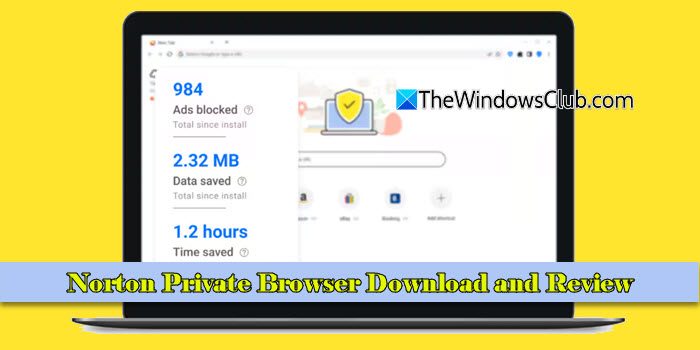
In today’s digital era, security breaches and cyberattacks are common issues users face while browsing the internet. While most leading browsers, including Chrome and Edge, have strong built-in security, their privacy protections require manual adjustments or extensions. On the other hand, Norton Private Browser has privacy features enabled by default.
Norton Private Browser Download and Review
Norton Private Browser allows browsing the internet anonymously, blocks trackers and phishing attempts, and prevents data from being exposed to hackers or malicious sites. It prioritizes privacy without needing extra configurations. Here’s how to download, install, and use it on a Windows 11/10 PC:
Download Norton Private Browser
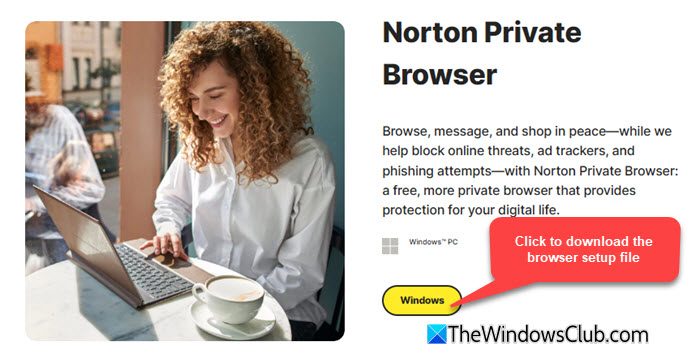
To download Norton Private Browser, visit the official Norton website using this link. Click the yellow button labeled ‘Windows’. A setup file starts downloading on your system.
Once the download finishes, right-click the file and select Run as administrator. Click Yes if prompted by the User Account Control window.
Review the License Agreement and Privacy Policy, then click Accept and Install to proceed with default installation. Wait for the setup to complete, and then click OK.
Set up Norton Private Browser
The Norton Private Browser has built-in privacy and security features, including anti-phishing, anti-tracking, and HTTPS encryption. While most features are enabled by default, the setup process allows you to customize them according to your preferences.
Click the shield icon in the top-right corner to access the Security & Privacy Center.
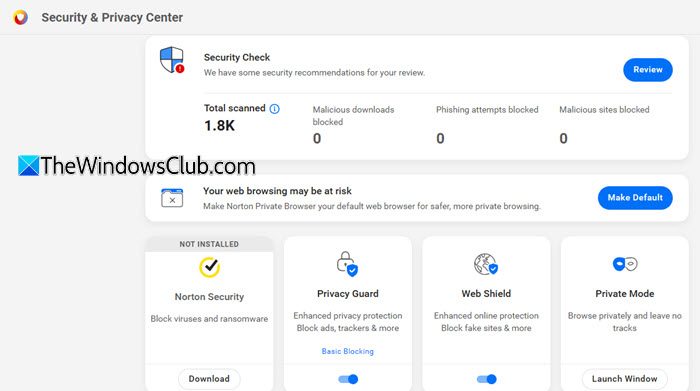
The Security & Privacy Center is a centralized dashboard that offers a collection of tools for managing your online privacy, identity, and personal data. You can manually enable or disable these tools/features to customize your security and privacy settings in the Norton Private Browser.
Here’s a quick overview of the key tools you should know about:
1] Privacy Guard
The Privacy Guard offers basic blocking by default, but you may adjust its strength for improved security.
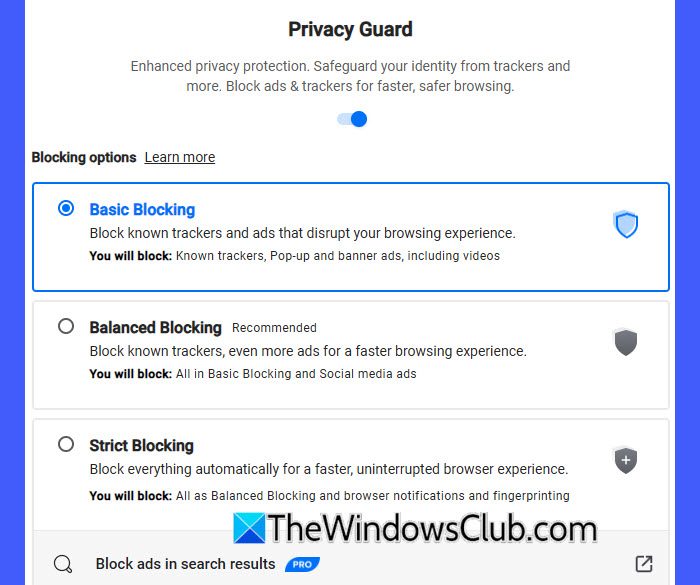
Click the Privacy Guard icon to the right of the address bar, then click the Settings icon in the popup. The following blocking options are available:
- Basic Blocking: Blocks known trackers.
- Balanced Blocking (Recommended): Blocks trackers and social media ads to enhance speed and privacy.
- Strict Blocking: Blocks all trackers, ads, and browser notifications but may cause websites to malfunction.
2] Web Shield
Blocks malicious websites and phishing attempts while you browse the web. Also prevents you from downloading potentially malicious content that may infect your PC.
3] Private Mode
A privacy feature that prevents your browsing history from being stored. Also deletes any tracking cookies or web caches you acquire during the session.
4] Password Managers
A password manager securely stores your passwords in one location and allows you to log in to websites using one master password. By default, the browser uses its own password manager to save your passwords, but you can also use another password manager if you wish to.
5] Extension Guard
Prevents untrusted extensions from being installed in the browser.
6] Privacy Cleaner
Clears your browsing history and other browsing data, including cached images and cookies. It helps protect your privacy and frees disk space.
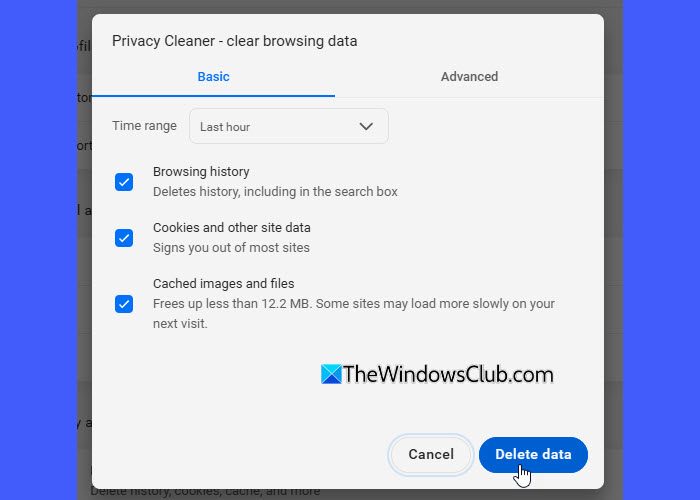
Apart from the above, here are a few additional features and settings you should know about:
- Change default search engine: You can customize your browsing experience by setting your preferred search engine, such as Bing (default), Google, or Yahoo!
- Import Bookmarks and Settings: Easily transfer bookmarks, saved passwords, and settings from other browsers.
- User Profiles: Create multiple profiles to separate work, personal, or guest browsing, each with its bookmarks, settings, and preferences.
- Use of VPN: Norton Private Browser helps protect your IP address by blocking trackers and preventing websites from identifying your location. However, it does not hide or change your IP on its own. To fully mask your IP address, you need to use Norton Secure VPN alongside the browser.
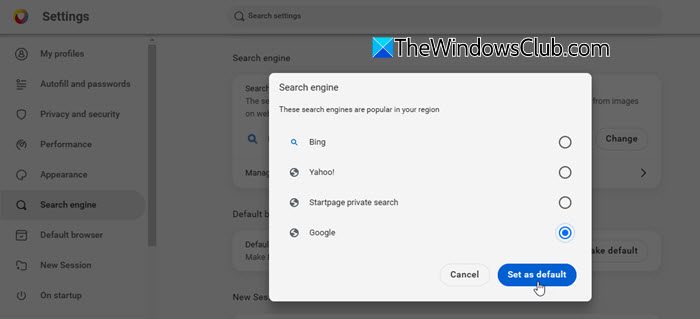
Using Norton Private Browser
To use Norton Private Browser, open the application and start browsing like any other browser. Use the address bar to search or enter a website URL.
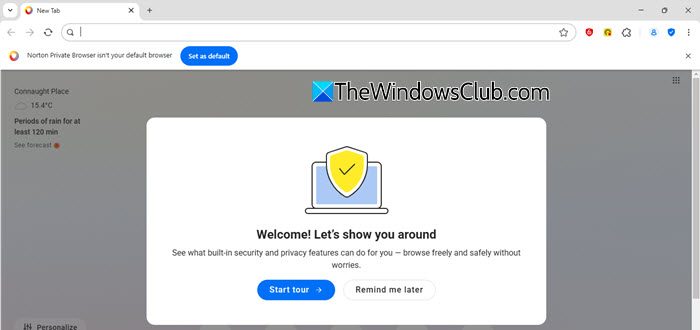
Click the shield icon at the top-right corner to access the Security & Privacy Center. For a more personalized experience, extensions and additional security tools can also be managed from the settings menu.
How to uninstall Norton Private Browser
Press Win + R keys. Type appwiz.cpl in the Run dialog and press Enter. In the list of currently installed programs, select Norton Private Browser and click Uninstall. Click Yes in the User Account Control prompt. In the Norton Private Browser window, click Uninstall and follow on-screen instructions to finish uninstalling the browser.
Norton Private Browser won’t update
If your Norton Private Browser isn’t updating, uninstall the existing browser and download the latest version from Norton’s official website. Then reboot your PC and reinstall the browser.
Norton Private Browser vs Chrome
Norton Private Browser and Google Chrome offer different approaches to privacy and security. While Norton Private Browser offers built-in tracker and ad blocking, Chrome requires extensions for similar protections. For data collection, Norton Private Browser minimizes tracking and doesn’t store browsing activity, while Chrome collects user data for ads and personalization. However, when it comes to customization, Chrome offers extensive extensions and themes, while Norton has limited options. Moreover, Norton Private Browser is designed to work best with Norton Security products, whereas Chrome integrates seamlessly with Google services like Gmail, Drive, and Docs.
Norton Private Browser Installation failed
If your Norton Private Browser shows ‘Installation Failed’, ensure no previous instances of Norton Private Browser or conflicting software are running on your system. Try rebooting and then reinstalling the browser.
Leave a Reply